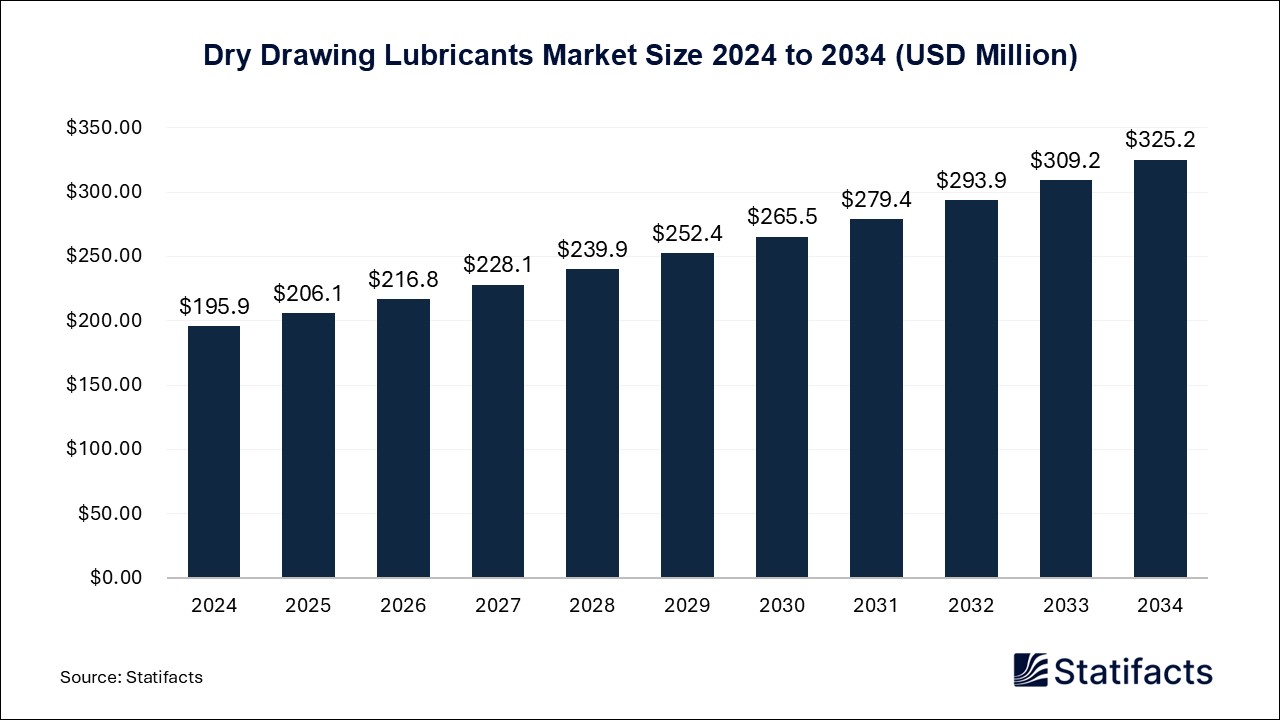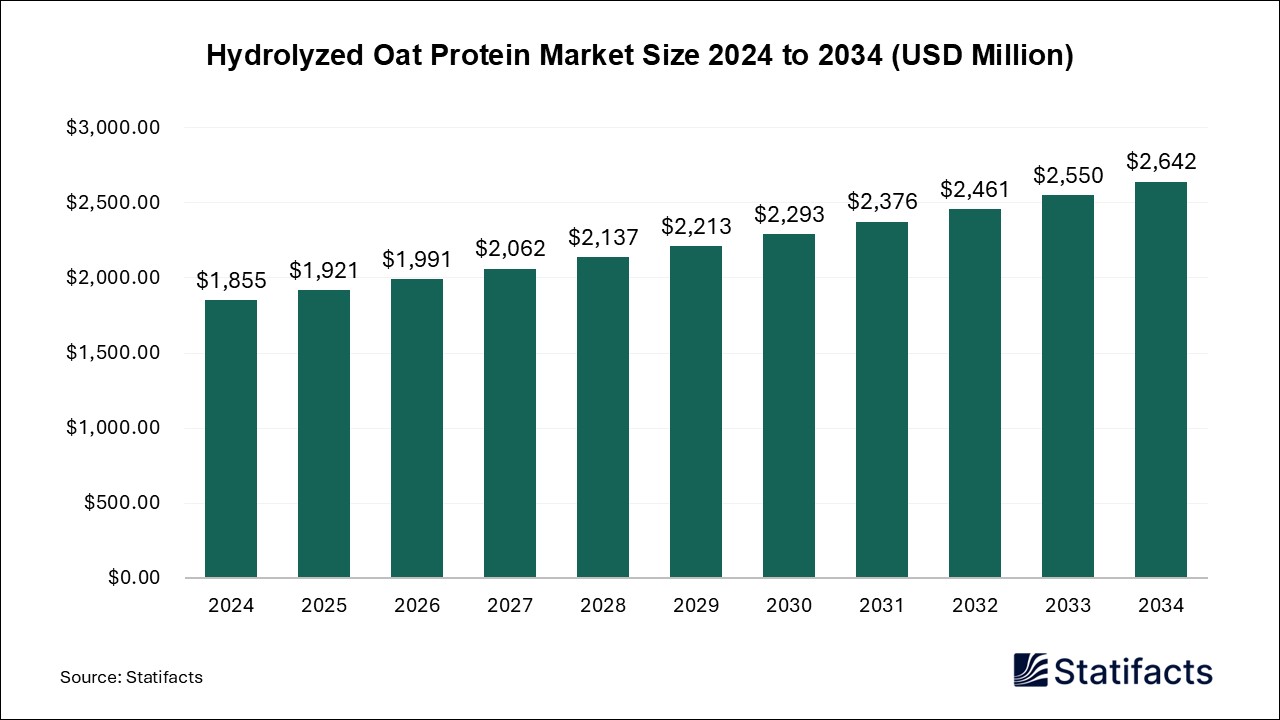Last Updated: 26 Aug 2025
Source: Statifacts
By clicking “Accept All Cookies” you agree to the storing of cookies on your device to enhance site navigation, analyze site usage, and assist in our marketing efforts.
Privacy PolicyAnimal Healthcare Market (By Type: Pharmaceuticals, Vaccines; By Application: Companion Animal, Farm Animal; By Region: North America, Europe, Asia Pacific, Latin America, Middle East & Africa) Industry Size, Share, Growth, Trends 2025 to 2034.
The global animal healthcare market size was estimated at USD 33.17 billion in 2024 and is projected to be worth around USD 56.66 billion by 2034, growing at a CAGR of 5.5% from 2025 to 2034. The market is growing due to pet humanization, adoption of digital health, preventive care, and therapeutics, and is driven by rising animal diseases and spending.
| Reports Attributes | Statistics |
| Market Size in 2024 | USD 33.17 Billion |
| Market Size in 2025 | USD 35 Billion |
| Market Size in 2031 | USD 48.25 Billion |
| Market Size by 2034 | USD 56.66 Billion |
| CAGR 2025 to 2034 | 5.5% |
| Base Year | 2024 |
| Forecast Period | 2025 to 2034 |
Pet adoption has gone up significantly in the last decade, ushering in a trend of pet humanization, allowing for growth in the animal healthcare sector. The rising pet humanization phenomenon is increasing demand for advanced veterinary care, nutritional products, and preventive treatments. Advances in veterinary sciences are being made with the integration of digital health technologies, such as telemedicine platforms and wearable monitoring devices for both pets and livestock. Pet and livestock owners are relying more heavily on preventive healthcare and vaccination programs, particularly in livestock, to curb zoonotic diseases and maintain safety and quality standards. Targeted therapeuticstics and specialty pharmaceuticals are gaining traction in veterinary medicine, mirroring innovations in human healthcare. Supplementing this, the adoption of sustainable and ethical animal care practices, including eco-friendly medicines and welfare-focused treatments, is shaping product development.
The major factors driving expansion of the animal healthcare market is market are the increased risk of zoonotic and chronic animal diseases and along with a rise in pet ownership in both developed and emerging economies, which has led to increased spending on companion animal care worldwide. Despite this growth a major restraint is the high cost of advanced veterinary services and medicines, which limits accessibility in Southeast Asia and other developing regions. In the coming years the sector is set to see strong opportunities, such as the expansion of veterinary healthcare infrastructure in emerging economies and the adoption of Artificial Intelligence (AI)-driven diagnostic and predictive tools for better animal disease management.
| Regions | Shares (%) |
| North America | 36% |
| Asia Pacific | 29% |
| Europe | 28% |
| LAMEA | 7% |
| Segments | Shares (%) |
| Pharmaceuticals | 68% |
| Vaccines | 32% |
| Segments | Shares (%) |
| Companion Animal | 55% |
| Farm Animal | 45% |
Published by Kesiya Chacko
| By_Type | 2024 | 2025 | 2026 | 2027 | 2028 | 2029 | 2030 | 2031 | 2032 | 2033 | 2034 |
|---|---|---|---|---|---|---|---|---|---|---|---|
| Pharmaceuticals | 22.56 | 23.69 | 24.88 | 26.14 | 27.45 | 28.83 | 30.28 | 31.80 | 33.39 | 35.07 | 36.83 |
| Vaccines | 10.61 | 11.30 | 12.04 | 12.81 | 13.64 | 14.52 | 15.46 | 16.45 | 17.51 | 18.64 | 19.83 |
| By_Application | 2024 | 2025 | 2026 | 2027 | 2028 | 2029 | 2030 | 2031 | 2032 | 2033 | 2034 |
|---|---|---|---|---|---|---|---|---|---|---|---|
| Companion Animal | 18.24 | 19.42 | 20.67 | 22.01 | 23.42 | 24.93 | 26.53 | 28.23 | 30.03 | 31.95 | 34 |
| Farm Animal | 14.93 | 15.57 | 16.24 | 16.94 | 17.67 | 18.42 | 19.21 | 20.02 | 20.87 | 21.75 | 22.66 |
| By_Region | 2024 | 2025 | 2026 | 2027 | 2028 | 2029 | 2030 | 2031 | 2032 | 2033 | 2034 |
|---|---|---|---|---|---|---|---|---|---|---|---|
| North America | 11.94 | 12.46 | 13 | 13.55 | 14.14 | 14.74 | 15.37 | 16.02 | 16.70 | 17.40 | 18.13 |
| Asia Pacific | 9.62 | 10.32 | 11.08 | 11.88 | 12.74 | 13.66 | 14.64 | 15.68 | 16.80 | 17.99 | 19.26 |
| Europe | 9.29 | 9.69 | 10.12 | 10.56 | 11.01 | 11.49 | 11.98 | 12.50 | 13.03 | 13.59 | 14.16 |
| LAMEA | 2.32 | 2.52 | 2.73 | 2.96 | 3.21 | 3.47 | 3.75 | 4.05 | 4.38 | 4.73 | 5.10 |
Last Updated: 26 Aug 2025
Source: Statifacts
| Subsegment | 2024 | 2025 | 2026 | 2027 | 2028 | 2029 | 2030 | 2031 | 2032 | 2033 | 2034 |
|---|---|---|---|---|---|---|---|---|---|---|---|
| Pharmaceuticals | 22.56 | 23.69 | 24.88 | 26.14 | 27.45 | 28.83 | 30.28 | 31.80 | 33.39 | 35.07 | 36.83 |
| Vaccines | 10.61 | 11.30 | 12.04 | 12.81 | 13.64 | 14.52 | 15.46 | 16.45 | 17.51 | 18.64 | 19.83 |
| Subsegment | 2024 | 2025 | 2026 | 2027 | 2028 | 2029 | 2030 | 2031 | 2032 | 2033 | 2034 |
|---|---|---|---|---|---|---|---|---|---|---|---|
| Companion Animal | 18.24 | 19.42 | 20.67 | 22.01 | 23.42 | 24.93 | 26.53 | 28.23 | 30.03 | 31.95 | 34 |
| Farm Animal | 14.93 | 15.57 | 16.24 | 16.94 | 17.67 | 18.42 | 19.21 | 20.02 | 20.87 | 21.75 | 22.66 |
| Subsegment | 2024 | 2025 | 2026 | 2027 | 2028 | 2029 | 2030 | 2031 | 2032 | 2033 | 2034 |
|---|---|---|---|---|---|---|---|---|---|---|---|
| North America | 11.94 | 12.46 | 13 | 13.55 | 14.14 | 14.74 | 15.37 | 16.02 | 16.70 | 17.40 | 18.13 |
| Asia Pacific | 9.62 | 10.32 | 11.08 | 11.88 | 12.74 | 13.66 | 14.64 | 15.68 | 16.80 | 17.99 | 19.26 |
| Europe | 9.29 | 9.69 | 10.12 | 10.56 | 11.01 | 11.49 | 11.98 | 12.50 | 13.03 | 13.59 | 14.16 |
| LAMEA | 2.32 | 2.52 | 2.73 | 2.96 | 3.21 | 3.47 | 3.75 | 4.05 | 4.38 | 4.73 | 5.10 |
This market covers pharmaceuticals, vaccines, diagnostics, feed additives, and veterinary services for both livestock and companion animals. Growth is driven by rising pet ownership, demand for animal-derived food, heightened awareness of zoonotic diseases, and a booming interest in animal welfare.
Pharmaceuticals and vaccines remain the largest categories, particularly for disease prevention and treatment. Diagnostics, feed additives, and emerging digital health tools are gaining traction as preventive care and smart monitoring become more widespread.
Livestock continues to account for significant market share due to its link to global food supply. Meanwhile, companion animal care is on the rise as pets are increasingly treated as family members spurred further by growth in pet insurance and premium care services.
North America leads with advanced veterinary infrastructure and high per-animal healthcare spending. Europe also holds strong ground due to strict welfare standards. The fastest expansion is occurring in Asia-Pacific, where urbanization, rising incomes, and increasing demand for both livestock health and pet care are key drivers.
High costs of advanced veterinary care and global shortages of skilled professionals pose accessibility challenges. Yet innovations like AI-powered diagnostics, telemedicine, wearable sensors for real-time health monitoring, and sustainable feed additives are opening new opportunities across companion and livestock sectors.
To get full access to our Market Insights, you need a Professional Account or a Business Suite.

You will receive an email from our Business Development Manager. Please be sure to check your SPAM/JUNK folder too.

You will receive an email from our Business Development Manager. Please be sure to check your SPAM/JUNK folder too.

Our customers work more efficiently and benefit from



